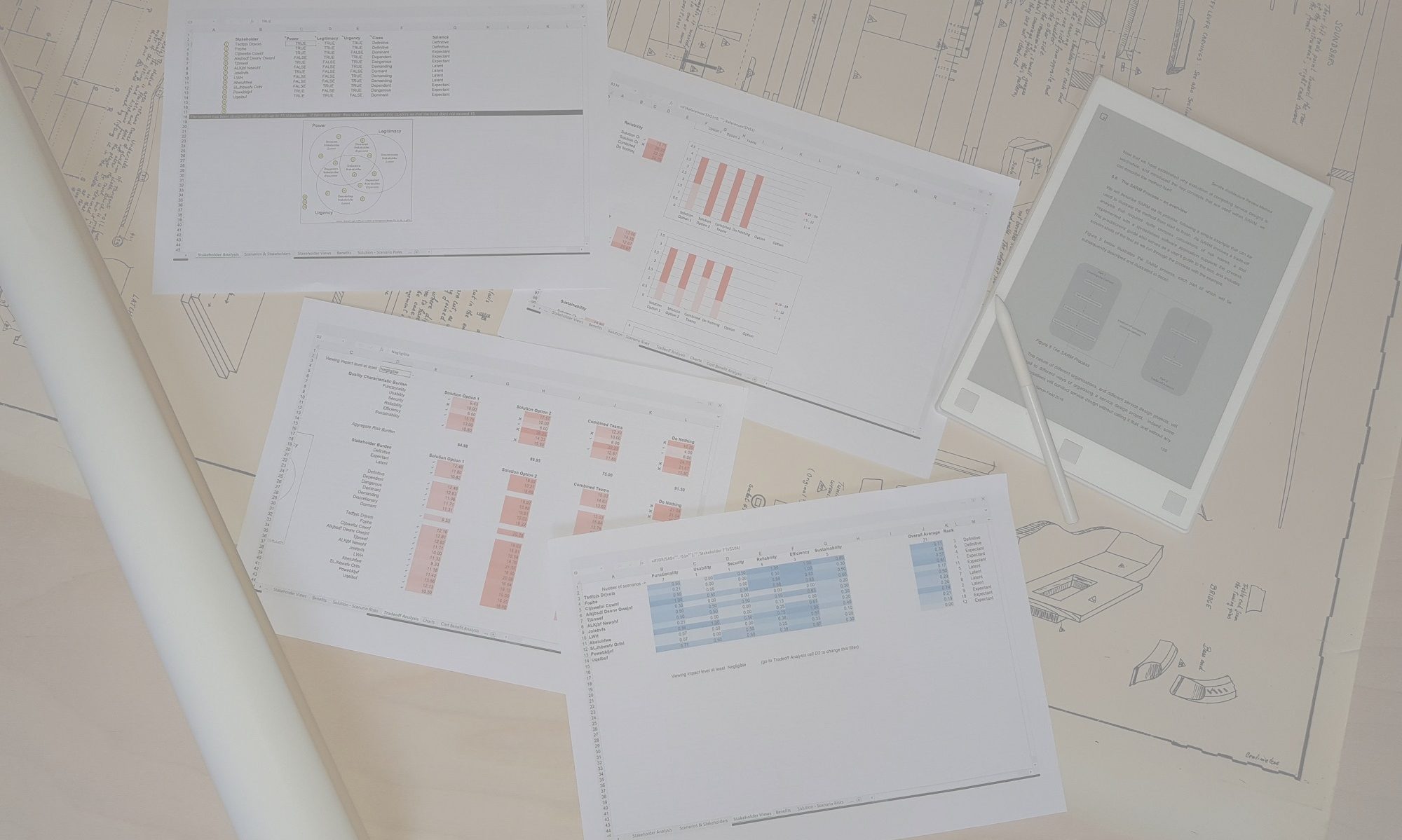The SARM spreadsheet tool includes some optional tabs that allow you to conduct a cost benefit analysis alongside your architectural analysis. The two work together, with the cost benefit analysis making use of the architecturally significant requirements (ASRs) and risk assessments, requiring some additional information about costs and benefits to provide a detailed cost benefit analysis.
Why would you do this? It can help you to compare different solutions that appear to offer different levels of support for your requirements, but at different costs. For example, you might have found an expensive and fairly comprehensive solution, and a much cheaper, but less complete solution. Which offers better value for money? Perhaps the cheaper one can satisfy many of the requirements at just a fraction of the cost. The cost benefit analysis will help you to quantify this.
It begins with the ‘Benefits’ tab of the SARM spreadsheet tool. Here you can describe the benefits that will be derived from a complete solution, which may be composed on a mix of one-off and annual financial benefits and some non-financial benefits too. The system lets you determine how many years of benefits and costs you wish to consider. The analysis also requires that the overall benefits are distributed across the set of requirements that have been defined in Part 1 of the SARM Process. You can choose between allowing the system to apportion the tangible (financial) benefits across the ASRs using the impact scores that were allocated in Part 1. Or you can specify an individual benefit amount for each ASR, making sure that the total adds up to your overall total benefit amount. A hybrid option allows you to allocate benefit amounts to some ASRs while leaving the system to apportion the remaining unallocated benefits according to the impact scores. You can also mark individual ASRs as contributing to up to four non-financial benefits, and these can then be explored using filters built into the trade-off analysis tab.
After you have completed the ‘Solution Risks’ tab, where you allocate the risk likelihood for each solution / requirement combination, you can proceed to the ‘Cost Benefit Analysis’ tab. Now you need to enter the costs associated with each solution option. These can be split between the one-off development cost, and an annual running cost. You can also indicate an exit difficulty for each solution, which will add an estimated exit cost amount.
The cost benefit analysis makes use of the risk likelihoods to estimate the actual benefits that will be derived from each solution option. So if the likelihood of a solution satisfactorily delivering a given requirement is only possible, then only 50% of the proposed benefits for that requirement will be counted. This percentage rises or falls according to the likelihood of an individual solution delivering a given ASR. In this way, a more realistic estimate of realised benefits is calculated for each solution option, rather than simply assuming that all benefits will be fully realised irrespective of the option that gets implemented. And these estimated benefits can be compared with the costs of each solution option, allowing the team to see an estimate of the return on investment for each option.
Further question about the cost benefit analysis in SARM are discussed here.

